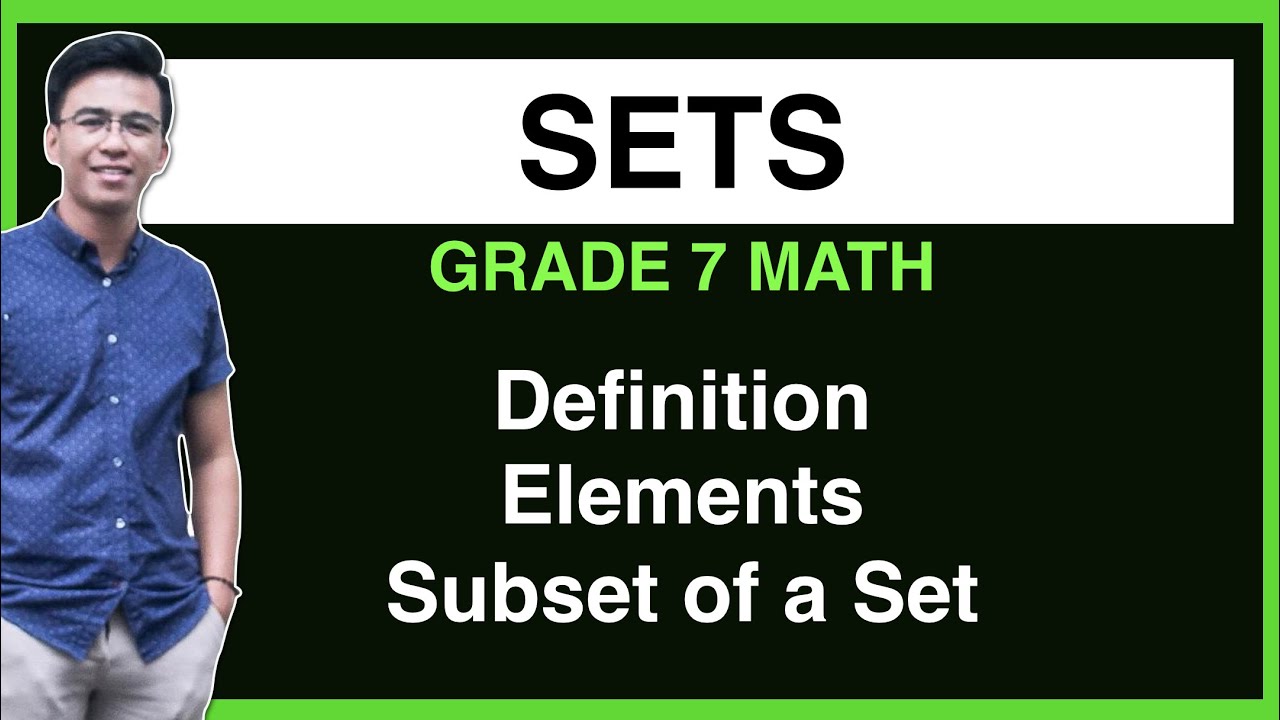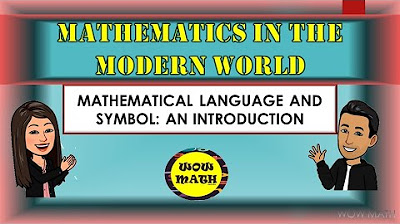ALE Ruang Vektor 04b
Summary
TLDRThe video explores the concept of 'closed nature' in mathematics, specifically in operations within sets. It explains how operations like addition in integers are closed because the result remains within the same set. It contrasts this with division in integers, which is not closed, as the result can be a fraction. The video emphasizes understanding properties of sets, even when not all elements are explicitly known. It uses relatable examples to clarify the concept of closed nature and encourages a mindset focused on the properties of sets rather than the individual elements.
Takeaways
- 😀 The concept of 'closed nature' refers to the property of a set where performing an operation on its elements results in a member of the same set.
- 😀 A set is closed under an operation if the result of applying the operation to any two members of the set also belongs to the set.
- 😀 For example, the addition of integers is closed because the sum of any two integers is always an integer.
- 😀 Conversely, the division of integers is not closed because dividing certain integers can result in non-integer values (e.g., 5 divided by 2 gives 2.5).
- 😀 The concept of closed nature can be illustrated with sets and operations such as addition, multiplication, and division.
- 😀 A set's closure under an operation means that the operation does not 'escape' the set, keeping the results within its boundaries.
- 😀 Understanding closed nature is important in mathematical operations to define the behavior and structure of number sets.
- 😀 The speaker explains that closure is not always obvious, as the result of an operation may or may not remain in the set depending on the operation used.
- 😀 In mathematics, when working with large sets, we often focus on the properties of elements within the set rather than needing to know every single element.
- 😀 The speaker encourages thinking about sets and operations from the perspective of their properties rather than their individual elements, emphasizing the abstract nature of mathematical sets.
Q & A
What does the term 'closed nature' refer to in the context of sets?
-The 'closed nature' of a set refers to the property where an operation on elements of the set results in an element that is still a member of the set. In other words, if an operation (like addition or multiplication) is performed on any elements of the set, the result remains within the set.
How is the concept of closed nature illustrated with the addition of integers?
-In the case of integers, the addition operation is closed because the sum of any two integers results in another integer. For example, adding 3 and 4 results in 7, which is also an integer.
Can you provide an example of an operation that is not closed for integers?
-Yes, division is not closed for integers. For example, dividing 5 by 2 results in 2.5, which is a rational number, not an integer. Therefore, division does not satisfy the closed property for integers.
What does the example of integer division show about the closed property?
-The example of integer division demonstrates that not all operations on integers are closed. When dividing integers like 5 by 2, the result is a rational number, which is outside the set of integers. Hence, division is not a closed operation on integers.
Why is it important to understand closed operations in mathematical sets?
-Understanding closed operations is important because it helps define the structure of sets. Knowing whether an operation on a set is closed or not guides how we can manipulate and combine elements of that set within mathematical systems, such as algebra or calculus.
How does the concept of closed operations relate to the idea of sets with many members?
-When dealing with sets that have many members, we may not need to list all elements explicitly. Instead, we focus on the properties that define the set, such as whether operations on its members stay within the set. This is especially useful when the set is large or infinite, like in the case of integers or real numbers.
What is the key takeaway regarding sets and operations from the transcript?
-The key takeaway is that we can perform operations on elements of a set without needing to know all the elements explicitly. Instead, we rely on the properties of the set and the operations to understand the behavior and outcomes of combining its elements.
How does the transcript suggest we think about operations on sets with many elements?
-The transcript suggests that when working with sets that have many elements, we should think of them in terms of their properties, rather than trying to list every single member. This approach allows us to handle large or infinite sets effectively.
What example from the transcript highlights the importance of knowing the properties of a set?
-The example of UIN students illustrates the importance of knowing the properties of a set. Even if we don't know all the individual students, we can identify a student as belonging to the set by their properties, such as their NIM (student ID) or name.
How does the concept of closed nature apply to real-world scenarios outside mathematics?
-In real-world scenarios, the concept of closed nature can apply to any system where operations need to maintain certain properties. For example, in computer science, data structures like arrays or lists are closed under certain operations (e.g., adding or removing elements), ensuring that results remain valid within the defined structure.
Outlines

Cette section est réservée aux utilisateurs payants. Améliorez votre compte pour accéder à cette section.
Améliorer maintenantMindmap

Cette section est réservée aux utilisateurs payants. Améliorez votre compte pour accéder à cette section.
Améliorer maintenantKeywords

Cette section est réservée aux utilisateurs payants. Améliorez votre compte pour accéder à cette section.
Améliorer maintenantHighlights

Cette section est réservée aux utilisateurs payants. Améliorez votre compte pour accéder à cette section.
Améliorer maintenantTranscripts

Cette section est réservée aux utilisateurs payants. Améliorez votre compte pour accéder à cette section.
Améliorer maintenantVoir Plus de Vidéos Connexes

Introduction to Sets - Elements and Subset of a Set | Grade 7 Math @MathTeacherGon

MATHEMATICAL LANGUAGE AND SYMBOL: AN INTRODUCTION || MATHEMATICS IN THE MODERN WORLD

Conjuntos Numéricos: Números Naturais e Inteiros (Aula 1 de 4)

How Infinity Works (And How It Breaks Math)

Intro to Sets | Examples, Notation & Properties

Lec 06 - Relations
5.0 / 5 (0 votes)
